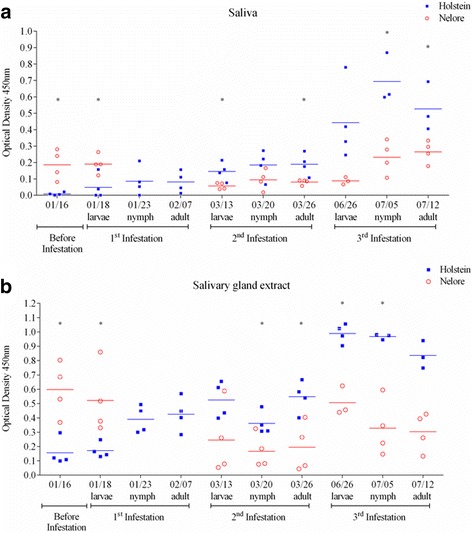Fig. 2.

Levels of IgG1 antibodies specific for saliva and extracts of salivary glands from female ticks differ between tick-resistant and tick-susceptible breeds of cattle after successive infestations with R. microplus. Levels of IgG1 antibodies specific for saliva (a) and for salivary gland extracts from female ticks (b) were measured in sera from animals of a tick-susceptible (Holstein, blue squares) or tick-resistant (Nelore, red open circles) breed of cattle. Antibodies were measured before (baseline levels) and during three successive artificial infestations with ticks, when the parasites were at the larval, nymphal and adult stages of their life-cycle. A dilution of 1:100 was used for each serum. Asterisks indicate the levels of significance between amounts of specific IgG1 antibodies in Holstein and Nelore hosts and the specific statistical results are described in the text
